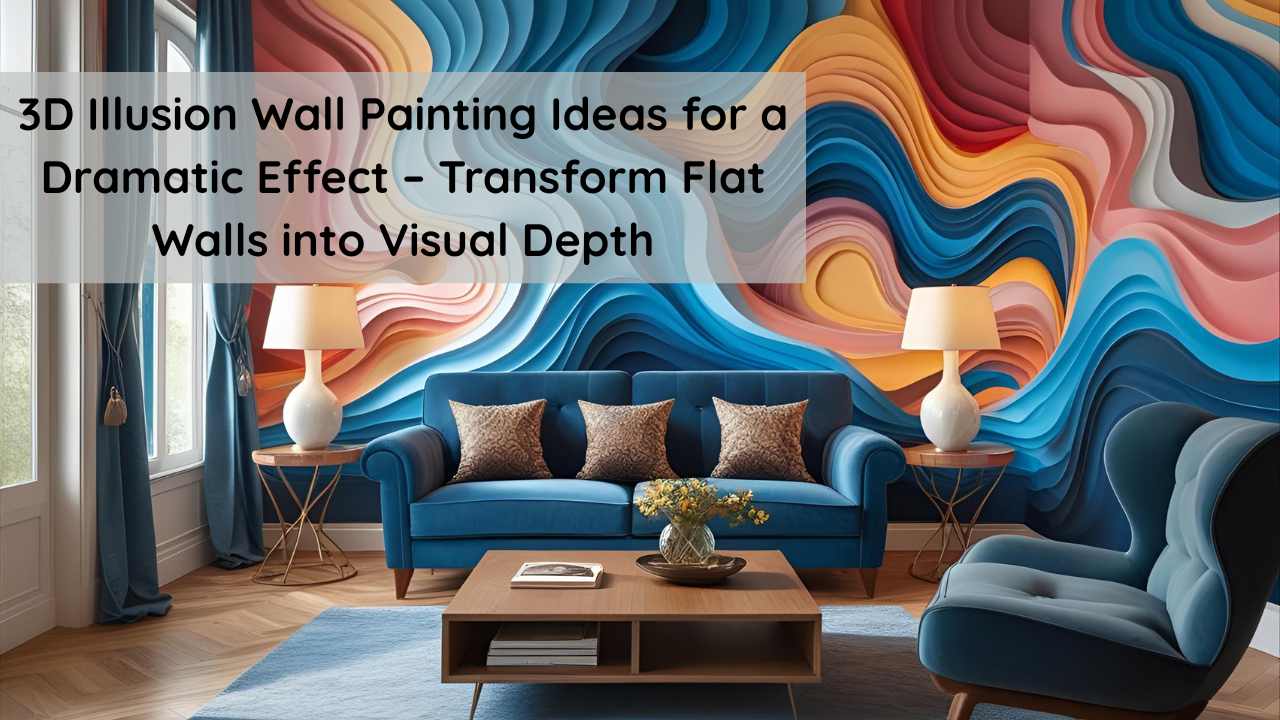Want to make your walls pop—literally? 3D illusion wall painting is a creative way to turn flat surfaces into dynamic works of art that create the illusion of depth, movement, or architecture. These eye-catching designs instantly elevate any space, making rooms feel larger, bolder, and more visually engaging.
In this guide, you’ll discover top 3D wall painting ideas, tools needed, and techniques that even beginners can try to achieve a stunning and dramatic visual effect.
Table of Contents
- What Is 3D Illusion Wall Painting?
- Why Choose a 3D Wall Effect?
- Tools and Materials You’ll Need
- Top 3D Illusion Wall Ideas to Try
- Beginner Tips for Success
- Final Thoughts
What Is 3D Illusion Wall Painting?
3D illusion wall painting is a technique that uses shading, perspective, and color blending to create the illusion of three-dimensional shapes or scenes on a flat wall. These designs mimic architecture, texture, or objects that seem to pop out or recede into the wall.
Popular in modern interiors, creative studios, hallways, and even office spaces, these illusions blur the line between paint and reality.
Why Choose a 3D Wall Effect?
- 🎨 High visual impact – It instantly becomes the focal point of any room.
- 🧱 Mimics texture like brick, tiles, or architectural recesses—without construction.
- 🪞 Creates depth in small or narrow rooms.
- 💰 Budget-friendly alternative to 3D panels or artwork.
- ✨ Customizable to match your space, size, and color palette.
Tools and Materials You’ll Need
Here’s what you’ll need to create your own 3D illusion wall:
| Item | Use |
|---|---|
| Acrylic or latex paints | For base, shadows, and highlights |
| Ruler or tape measure | To ensure symmetry and accuracy |
| Painter’s tape | To block out sharp edges and shapes |
| Pencils and erasers | For sketching designs before painting |
| Brushes (fine and medium) | For detailing and filling shapes |
| Sponge (optional) | For blending soft shadows |
| Level or laser guide | To align geometric patterns properly |
Optional: a projector to trace complex designs or perspective lines.
Top 3D Illusion Wall Ideas to Try
1. Geometric Cube Illusion
Create a repeating pattern of cubes using light, mid-tone, and shadow colors. The trick lies in shading—each cube pops with proper contrast.
✅ Best for: Living rooms, hallways, or accent walls
💡 Tip: Use three complementary tones of the same color family for harmony.
2. Trompe L’oeil Window or Arch
Paint a fake window, archway, or balcony view to make a small space feel larger. Add shadows and perspective lines to complete the trick.
✅ Best for: Small bedrooms, offices, or powder rooms
💡 Tip: Use vanishing-point perspective techniques for realism.
3. Brick Wall Illusion
Paint bricks with varying shades and add shadows under each row to mimic depth. This gives the effect of exposed brick without the expense.
✅ Best for: Industrial-style interiors or cozy nooks
💡 Tip: Dry brush white over the edges for a rustic touch.
4. Hole-in-the-Wall Art
Create the illusion that your wall is “breaking open” to reveal something inside—like nature, the galaxy, or a hidden passage.
✅ Best for: Game rooms or creative spaces
💡 Tip: Outline the “crack” with darker tones and blend outward.
5. Floating Staircase or Tunnel Design
Use depth and vanishing points to create a wall that looks like a stairway or tunnel disappearing into space. It’s bold, surreal, and unforgettable.
✅ Best for: Entryways or accent walls
💡 Tip: Keep your vanishing point consistent for realism.
Beginner Tips for Success
- Sketch first: Always plan your design on paper or digitally.
- Use painter’s tape: Clean edges make the illusion stronger.
- Stick to 3–4 shades: For most effects, a light, mid-tone, and dark are enough.
- Study light: Decide where your imaginary light source is to apply shadows correctly.
- Work slowly: Illusions require precision—don’t rush the layering or blending.
Still unsure? Try practicing your design on cardboard or foam board before moving to the wall.
Final Thoughts
Painting a 3D illusion wall is one of the most impactful ways to add drama, character, and artistic flair to your space—without buying wallpaper, 3D panels, or expensive décor. With a few shades of paint, patience, and basic tools, even beginners can achieve a striking, professional look.
Whether you go with geometric cubes, fake architecture, or surreal scenes, your walls can become immersive visual stories that surprise and impress anyone who sees them.

